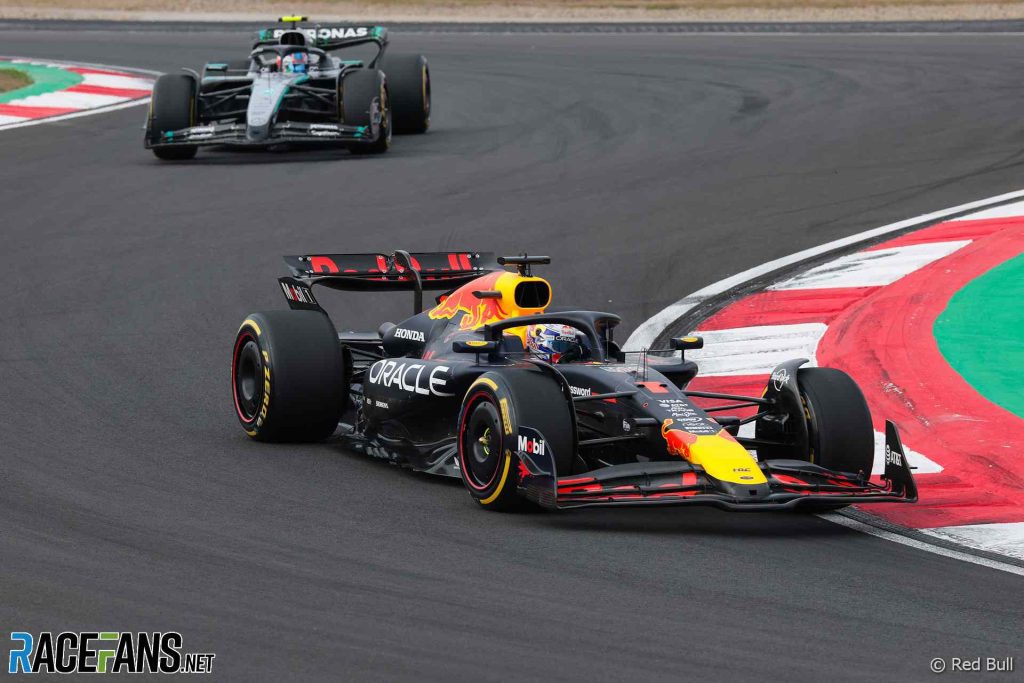After narrowly missing a win in Melbourne, Max Verstappen faced a tough outing at the Chinese Grand Prix, finishing in fourth place, 16 seconds behind the race winner.
Red Bull struggled to match their rivals at the newly resurfaced Shanghai International Circuit. As Verstappen pointed out during the race, he lost more time than necessary, particularly during the initial stint, as he attempted to conserve the medium tires, which suffered significant degradation during the sprint race.
Most of Verstappen’s deficit to race winner Oscar Piastri occurred during that early period. However, on hard tires later in the race, the RB21 was competitive with the MCL39 as the track conditions improved.
Verstappen also had to navigate past the Ferraris, which overtook him at the start of the race. Although Lewis Hamilton’s second pit stop eliminated him as a competitor, Verstappen lost valuable time getting by Charles Leclerc.
Had he not lost that time, he might have been closer to George Russell for the last podium position, and possibly even Lando Norris, who experienced brake issues. Radio messages highlighted that throughout the race, the team recognized Verstappen had more pace as it progressed, contrasting sharply with his struggling teammate.
Max Verstappen’s Chinese Grand Prix Radio Communication
Stint 1: Medium
Stint 2: Hard
Finish
Stint 1: Medium
Neither Red Bull driver was satisfied with the car’s balance when on the medium compound. Verstappen lost significant time to the leader during this stint, clearly expressing his dissatisfaction with the balance at both the front and rear of the car.
Stint 2: Hard
No team had previously tested the hard tire before the race. However, Red Bull was among the few teams to start one of their cars on this tire. This allowed Verstappen’s engineer, Gianpiero Lambiase, to relay insights on the tire’s performance, which improved throughout the stint, leading many drivers on the same strategy to believe they could finish without another pit stop.
Improving Conditions
As the race progressed, the weather conditions on the track evolved significantly. The increasing cloud cover reduced the asphalt temperature by around 10°C, enabling most drivers to accelerate their pace. Verstappen’s Red Bull notably thrived in these new conditions, achieving a fastest lap just inches away from Norris’s best time.
Post-Race Reflections
Following the race, Red Bull team principal Christian Horner briefly joined Verstappen’s radio communications, which differed from their interactions after Lawson finished in 16th place. In contrast to previous races where Verstappen expressed frustration over his car’s performance, he sounded positive as he exited the vehicle, indicating a constructive race experience despite the challenges.



